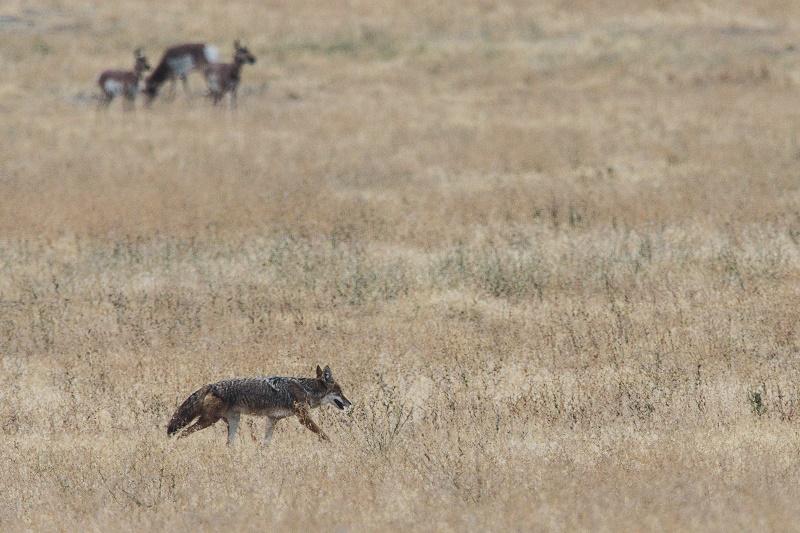Coyotes are dangerous. Contrary to Saturday morning cartoon memories, they are not hapless creatures trying to catch a roadrunner with various ACME products. These are wild animals that kill livestock and pose a danger to pets and people.
According to the Canadian Wildlife Federation and Environment and Climate Change Canada, the presenters of the Hinterland Who’s Who series of short TV wildlife films, the coyote is a native species to North America and is a canine just like wolves and dogs. Originally confined to the prairie provinces, they became established in Ontario and Quebec in the 1940s and 1950s.
In recent weeks, The Review received many comments on social media from readers who said they regularly hear and see coyotes near their homes—both in urban and rural areas.
Readers said they have heard and seen many of them in and around Vankleek Hill and along Cassburn Road.
Others said they have had coyotes right outside their homes at night, and one person said the howling was so loud one night that “it drowned out the TV.”
Farmers in Ontario who lose livestock to coyotes can receive compensation for their losses through the Ontario Wildlife Damage Compensation Program of the Ontario Ministry of Agriculture, Food, and Rural Affairs (OMAFRA). At the local level, the program is administered by municipalities.
Jeff LeRoy is the municipal investigator for East Hawkesbury. When a farmer loses an animal to coyotes or any other predator, they call him, and he goes to the farm and gathers evidence proving that the animal was killed by a predatory animal. Evidence means taking three to six photos of each animal and its injuries to prove it did not die of natural causes. He must visit the affected farm within 48 hours of the killing, because coyotes will return to eat leftovers.
After the evidence is gathered and forms completed, inspectors give them to the municipal clerk who then sends the application to the Ontario Ministry of Agriculture, Food and Rural Affairs (OMAFRA) for approval within seven days of the investigation. If the application is approved, the amount OMAFRA pays the farmer is based on the market value of the animal. OMAFRA now does all the valuing. In the past, investigators like LeRoy did it.
Farmers do not always get compensation, though. Gilles Faubert of Elishka Farm on Green Lane Road said that three years ago, a coyote “tore a sheep apart” on his farm. He had a veterinarian come and survey the damage and applied for compensation. The application was rejected because the farm is not Faubert’s sole source of income.
LeRoy also said that farmers do not always get the compensation they apply for. He said there was only one case of a farmer applying for compensation in East Hawkesbury in the past year, and that application was rejected.
According to LeRoy, although several photos were taken and every form was properly completed, OMAFRA determined there was insufficient evidence to grant compensation.
After dark is when livestock are most at risk of being attacked by coyotes. LeRoy said most sheep farmers are keeping their animals, particularly sheep, inside the barn overnight.
“We try to keep the animals inside at night,” said Faubert. He has 10 sheep and 45 goats on his 86-acre property.
The Ontario government is making changes to the compensation program which it claims will make it more accessible for farmers.
The changes include giving more ways to provide evidence, and compensation that better reflects the market price of animals.
Another plan is to develop a more transparent and independent appeals process for denied applications.
Right now, appeals are all handled by OMAFRA in Guelph.
The government also plans to increase and improve training for municipal inspectors like Jeff LeRoy.
He said he is just learning about the changes and finding out about which new policies and procedures he will have to learn.
There is an open coyote hunting season in Wildlife Management Unit 65, which includes Prescott-Russell.


